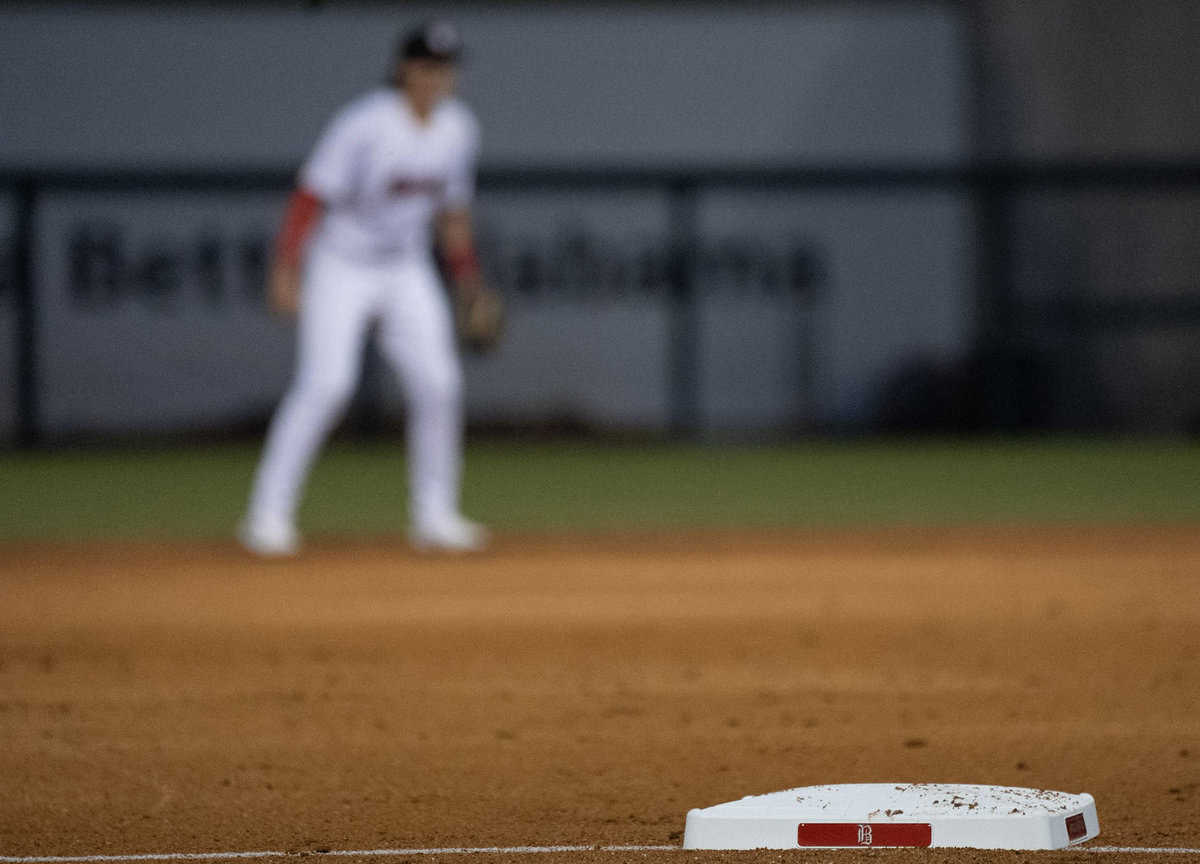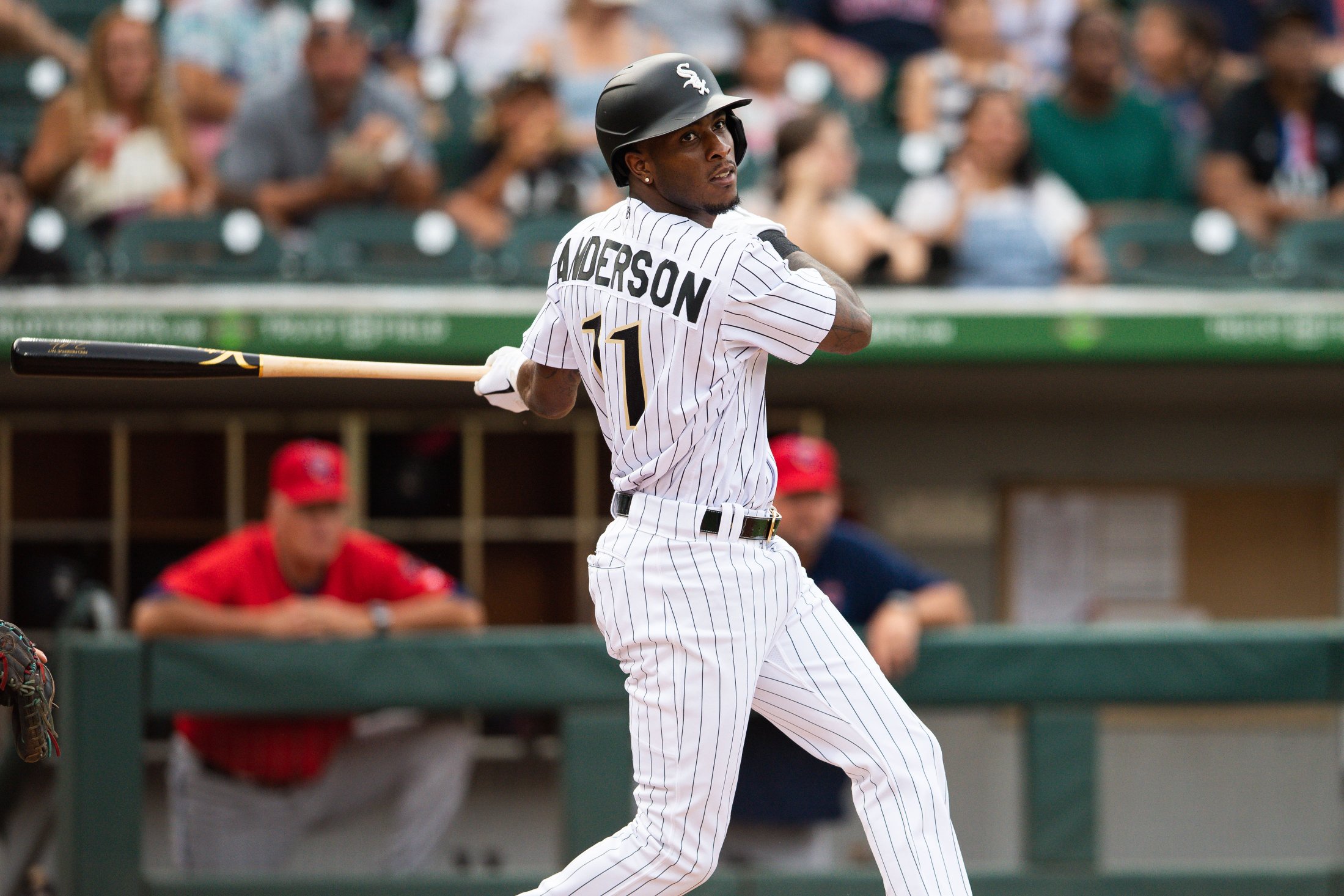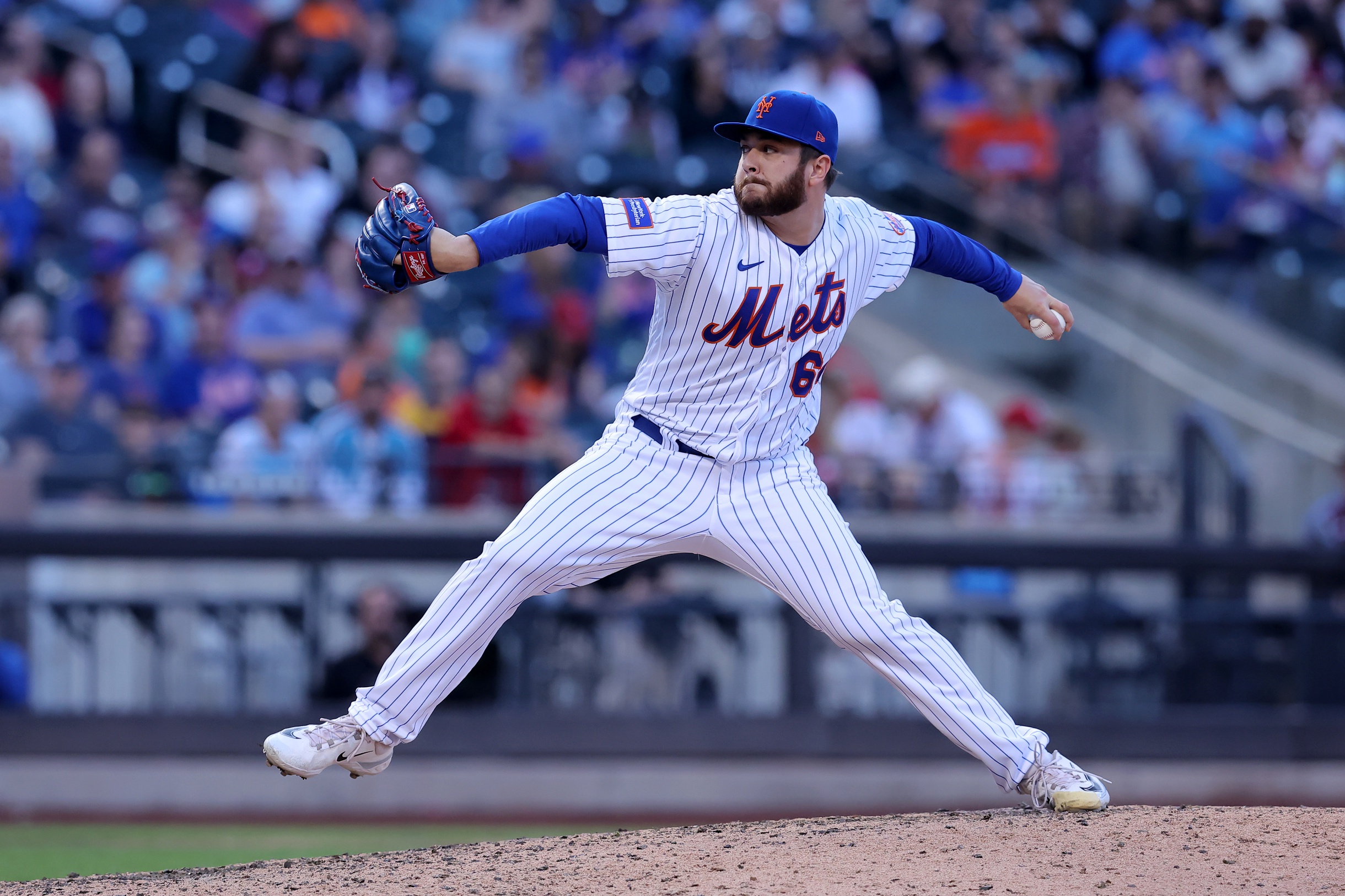Over the course of Prospect Week, we wrote up 54 different White Sox prospects, which risks feeling like overkill when it culminates in a pair of lists that only put 10 of them in order. Perhaps we could've taken it upon ourselves to rank all 54 players, but the more players you rank, the bigger the risk of looking completely doofy when somebody who went unmentioned like Adisyn Coffey ends up posting a 1 WAR season in the bullpen. When you only rank 10, you can pretend anybody was 11th (or in our cases, 15th or 19th).
In our opinion, Prospect Week is more about the journey, not the destination. The legs of the tour, for those who missed any installment:
But for the Sox Machine supporter who wants to see us squirm and commit to a sequence that we'll have to revisit at the end of the season, today's your lucky day. Below are our top 10 White Sox prospects for the 2025 season.

No. 1: Noah Schultz
Jim: At this point last year, I was apprehensive about ranking Noah Schultz higher than third because I could see a situation where he might never throw more than 50 innings a year, and the rule of thumb about really, really, really tall pitchers would add to its body count, so it’s cool that his 90 innings were convincing enough that there isn’t much of a discussion about who’s No. 1.
James: The comforting thing about putting the gangly freak stuff monster at the top of the organizational prospect list is that he’s got 115 pro innings of throwing strikes pretty reliably at this point. That’s usually the element missing in throwing a Chris Sale comp on every left-hander who throws from a unique angle or is generally weird. Schultz throws hard, has an elite secondary and repeats his delivery. Other than the looming health concerns, we’re sweating the small stuff at this point.
Jim: What most jumps out to me from watching him in person multiple times is that there isn’t much gangle or lope to his baseball movements. If you told me a guy who was 6’10” and 240 pounds was unhittable, my instinct would be to say “then bunt on him,” but has no problems coming off the mound in any direction to field his position. He stands out to be sure, but in the sense that it looks like he’s been rendered at 125% when everybody else is to scale. The rubber looks too small under his feet, and when non-players sit next to him on the bench, it appears from a distance as though he took his child to work, but that’s just the visual context failing him. There’s real athleticism there, so when he adds a four-seamer in the middle of the season and he locates it as well as anything else, it’s not a huge surprise.
James: It’s time to retire the Mike Teavee comps for Schultz, once and for all.
No. 2: Kyle Teel
JIM MARGALUS
Jim: Teel’s profile is exciting in the sneaky way, because while a 2-3 WAR catcher doesn’t sound thrilling on the surface, he has multiple ways to get there. There’s enough of bat-to-ball skills and power that one could lead the other, and while he’s still learning the finer points of defense, it seems like he has the athleticism to do everything well enough. The hope is that he’ll find one thing that allows him to hang in the majors as a rookie, and the rest of his game will join in due time. And apparently Walker McKinven turns every decent catcher into an All-Star, so you have to factor that in as well.
No. 2: Hagen Smith
JAMES FEGAN
James: Betting on someone with virtually no professional track record over my moral obligation to pump up the value of catcher defense at every opportunity is a betrayal of every principle I hold dear. Good luck out there, Hagen.
No. 3: Hagen Smith
JIM MARGALUS
It’s a coin flip to be sure, and I gave Teel the nod because he’s had a full year in the pros to show that he can build upon the college profile that had White Sox fans lamenting the Red Sox taking him one pick ahead of Jacob Gonzalez. But I am looking forward to watching the White Sox draft and develop a top-flight college arm that they have no intent of rushing. Chris Sale’s success was a double-edged sword because it inspired the Sox to speed Carlos Rodón, Carson Fulmer and Garrett Crochet up the chain and figure out a five-day routine on the fly. Rodón and Crochet eventually realized their potential – or close to their potential – but it was a painstaking process, and the payoff arrived too late to plan around.
No. 3: Kyle Teel
JAMES FEGAN
James: The only thing holding back Teel’s defense is that he hasn’t done it very long. He’s lauded for his feel but didn’t actually call games in college. His framing grades well but because of a mechanical adjustment made midway through last year. The counterpoint is that if he had done these things well for longer, he’d cost more. Like Quero, he doesn’t have the batted ball data that says he’s going to be an offensive stud, but has just consistently hit OK or better and kept on improving at every stop, which is the type of profile that sets up to make someone sound stupid for saying “but his batted ball data!” about a 22-year-old in Triple-A.

No. 4: Edgar Quero
James: Watch Quero behind the plate, and you’ll see some actions that don’t yet seem as rigid and formalized as a big league catcher, but nevertheless produce an average-ish pop time. He doesn’t hit the ball quite as hard as 16 homers in 98 games would make you think. But then it’s wise to recall that he’s only 21 years old still, and is inviting this level of scrutiny because pitchers who are actually his same age can’t get him out. There’s a chance we’re too low on Edgar here and he’ll make a point of reminding us.
Jim: Quero’s confidence is my favorite thing about him. He’s the rare White Sox prospect who looks comfortable taking pitches even when they’re strikes, so it comes as a bit of a surprise when the data says that his pitch-taking and count-based activity could more possibly be the product of passivity. That’s the one thing that makes me apprehensive about him smoothly closing his last mile, just because if he gets bullied into a bunch of pitchers’ counts, he doesn’t have the wheels to turn weak contact into singles, and it might be tough for him to be a plus glove from the jump. Otherwise, assuming the back issue is a one-off bit of bad luck, I’d still consider him catcher-of-the-future material.
Jim: Braden could be the best position player of this group and fill multiple needs the White Sox have lacked for the better part of two decades. Perhaps fixing the strikeout rate and switch-hitting imbalance requires everything to break right for him in order to fulfill this vision, and starting his career with a broken ankle means that outcome is already off the table. If he weren't injured and the White Sox drafted him with the fifth pick, he'd probably rank where Smith does, so putting him fifth feels suitably guarded.
James: Hell or high water, Colson is going to play in the majors this year, and that seems like something to value in this ranking of players who might contribute on this level at some point. His power has matured into a real attribute and while a below-average defender at short is an interesting building block for a team, it gives a decent floor to Montgomery’s production. The defining characteristic of Montgomery’s game was strike zone discipline before 2024, and his chase rate sagged to league average in a season where he was admittedly out of whack until late August. I like that to snap back to his established norms, even if the spots in the zone where he does damage remain limited.
Jim: Two years in a row, I’ve gone to see Colson Montgomery in person and came away unsettled about the lack of action he generated. The version I saw in September 2023 could be written off as bad timing in an otherwise successful season, especially since he then went and had a far more productive series in Chattanooga to close out the year. It was easier to more confidently articulate the version I saw in Nashville last August because it’d been preceded by months of such struggles, and it was around that time the White Sox and Montgomery’s camp had a Zoom to figure out how to best right the ship (I’d like to think my post is what prompted it, on the basis of “If that idiot can see it…”). He then had a fine September and leveled the Arizona Fall League, so maybe all the struggles served a purpose and he remains a comfortable top-100 prospect. But if he hits the field in 2025 and continues looking like a guy who can only cover so much of the strike zone and is only guaranteed to see fewer mistakes when he reaches the majors, I’ll wonder why I kept wanting to set aside what I saw.
James: Returning to a Double-A level he should have torched, Ramos started 2024 in a massive slump, and that’s on him. Though come to think of it, the last thing I remember him doing in a Barons uniform was pulling a Ben Joyce fastball over the wall in Regions Field. It was predictable that Ramos’ prospect ranking would suffer from struggling in an emergency promotion to the majors, returning to Triple-A after a quad strain and not getting untracked until a mechanical tweak enabled a strong final two months. But to see multiple outlets moving him to the teens of a system still starved for offense makes me feel like I’m taking – and perhaps doubling up on – crazy pills. We put that Ramos needs to work on plate discipline because sure, it could be better for a bat-first prospect, but it’s pretty far from a fatal flaw. His defense rated below average at first blush (as a 22-year-old rookie) but he’s got the athleticism to stick at third base if the White Sox let him. Ramos’ hasn’t grown into exceptional bat speed, which makes it harder to see star-level outcomes, but his under the hood numbers all suggest someone who was treading water in the majors at a young age, before clearly playing his best ball down the stretch.
If the White Sox have reached the point where major league-ready solid average regulars are pocket change, I guess I’m the last to know.
Jim: Burke was drafted in the third round of the 2021 draft, so if you were to learn that he’d be showing real rotation-sticking promise by the end of the 2024 season, that would sound perfectly in line with the expectations of a college starter with a sturdy 6-foot-6-inch build and MLB-caliber arm strength. Jonathan Cannon fits those same descriptions, and he was taken in the third round a year later. With Burke, you just have to ignore most of the stuff that came before August 2024, including a shoulder problem, but sometimes the middle of the story could use an editor. All the progress seems real, the injury history I glossed over is what I’m unsure about.
James: It’s an elite changeup paired with what has been well above-average command for most of his career up until his injury, which hampered Thorpe’s ability to mitigate his fastball vulnerability issues with his cutter, or any other variant he might learn to manipulate. On Super Bowl weekend, it feels risky to support Thorpe when he’s hurt over a bunch of other pitchers who have been hurt slightly less recently, but maybe it won’t feel that risky by July. He’ll probably never top a rotation with that fastball, but I’m willing to bet on the guy with an elite pitch who throws lots of strikes. Profiles in courage, etc.
Jim: I think it’s best to remember the old mariner’s rhyme:
Thorpe before Burke, rankings will work.
Burke before Thorpe, that's fine, too.
The reason I have them in this order is a creeping dread that the Dylan Cease trade was poisoned. When it comes to Thorpe in and of himself, the changeup is great, and if the guy we saw pitching in Chicago was more or less at his physical worst, the upside if/when he returns to his physical best should be rather sizable.
James: Montgomery looks to have 30-homer potential, massive bat speed and is the sort of athlete any farm director would want to fill the system with if he could. All I’m saying is it would be nice to see how much contact the guy who struck out 20 percent of the time in his breakout college season makes against professional pitching before we start projecting his hit tool with precision.
Jim: I have plenty of misgivings about a guy whose entire Baseball-Reference.com page only accounts for 79 innings, even when including college, the Cape Cod League and the Arizona Fall League. It reminds me a little of Norge Vera, in the sense of testing the bounds of how little a pitcher can pitch and still be considered a pitching prospect. But the way Taylor vaporized hitters at Kannapolis, even briefly, reminds me a little bit of Cease being ranked 10th on Baseball America’s White Sox list in 2018. The April after that list came out, I watched him light up the radar gun on a cold afternoon for Winston-Salem against the Carolina Mudcats and thought, “10th seems conservative.” So here Taylor is, ninth with the hopes that it’ll look silly that there could’ve ever been considered eight White Sox prospects better.
James: Scouts were skeptical of Burke staying healthy on draft day, mostly because his college career hadn’t been a triumph in that regard. And while we’re at a high-water mark for Burke being healthy and at the height of his powers, that’s been a problem in the professional ranks as well. Much of Burke’s grisly minor league record was accumulated while pitching in a diminished capacity, and an achy shoulder that was addressed with non-surgical means doesn’t have the structured recovery of Tommy John surgery (which he’s also had in the past). That’s the trepidation for someone who has only looked pretty awesome and overpowering in the majors and will likely be in the Opening Day starting five. Having that under his belt makes it a little bit easier to project his future role than Taylor.
Jim: If my misses cost me money, then I’d rank Ramos 10th for the reasons James mentioned, and add some complaints about Miguel Vargas getting in the way of figuring out what Ramos can really do. But want to write about Baldwin, so here he is instead.
I’m only being a little cute, because originally I was looking at Ramos and Chase Meidroth in this territory, and thinking how much it’d help if they’d shown the ability to cover shortstop or an outfield corner, because there's a chance that they flub an audition and end up getting boxed out of third and second base, respectively. Those are two things Baldwin has shown the capacity of doing at various levels, which is how he entered this chat. Also, I did some legwork last summer into a Baldwin profile that I had to pause because the White Sox called him up the series before Charlotte played in Nashville, and then he got dragged down into the doldrums of the losingest team ever. Anyway, one of the reasons Baldwin ended up at UNC Wilmington and lasted until the 12th round was that he was a late bloomer, and I was told it wouldn’t be surprising to see him continue to add strength even now, in his age-24 season. I don't have access to the Baldwin family medical records to validate that assertion, but his switch-hitting and defensive versatility already makes him such a potentially useful player that just a little bit more pop could change his stock considerably, so I wanted a place to document that. Here it is.
James: In most instances, backfield velocity readings from pitchers on injury rehab is not something team officials easily offer. Taylor was an exception. The White Sox told everyone he was touching 100 mph before he was let loose to immolate Carolina League hitters for a spell, and they’re not shy about touting him as one of the best arms in the organization even after an AFL showing that reminded how much injury has kept Taylor from getting unglued for much more than fits and starts for three years running. There’s no particular reason to doubt the talent, since Taylor’s stuff draws awe and he’s built like every day is leg day. He just hasn’t done it very much yet, and both his college track record and his AFL stint kept the line between No. 2 starter and awesome reliever very blurry.
honorable Mentions
| Jim Margalus | James Fegan |
|---|---|
| Bryan Ramos Chase Meidroth Mason Adams Ky Bush George Wolkow Caleb Bonemer Blake Larson Jacob Gonzalez | Caleb Bonemer Blake Larson Chase Meidroth Jacob Gonzalez |
Jim: Ramos and Meidroth are on the cusp as I said, and the only thing sapping my Adams enthusiasm is wondering whether he’d be able to hang in the majors with less than his best velocity. Bush’s entire 2024 body of work feels a little bit slept on, but he just had this same problem in September. Wolkow remains a captivating project from Downers Grove, but it probably doesn’t hurt him to be a little less prominent at this juncture as he attempts to figure it all out. The White Sox have enough players I feel are rankable that I didn’t feel an urge to put a number on Bonemer or Larson before seeing what they look like in game action. And man, 2025 feels like a big year for Gonzalez one way or another.
James: I’ve been getting very into minor league data of recent, which I contend is better than most forms of online radicalization, but leaves a blind spot that you might’ve picked up on already. Braden Montgomery has cracked a lot of top-100 lists, so sliding him down is about my lack of confidence in making big conclusions off of him, not belief that the White Sox have the deepest system ever. Bonemer has driven early backfields raves, and Larson is in the right place for a low angle lefty to thrive, but it feels like we haven’t opened the box yet on either. Another bias I hold is that major league defenses cannot be felled by a barrage of soft to medium contact. Call it post-Nick Madrigal stress disorder, though he hit pretty well here before the whole torn hamstring thing. But it leads me to be low on Meidroth types until they can model how it will work in the majors. Despite Gonzalez so far playing like one of those types, and telling me straight up “I don’t have power” multiple times, Kiley McDaniel made a solid argument on how someone like him, who makes a lot of contact and plays a lot of shortstop, has a high floor for providing value. Gonzalez has the frame for dreaming on a bit more punch too, he’s just eating through a lot of his runway.






